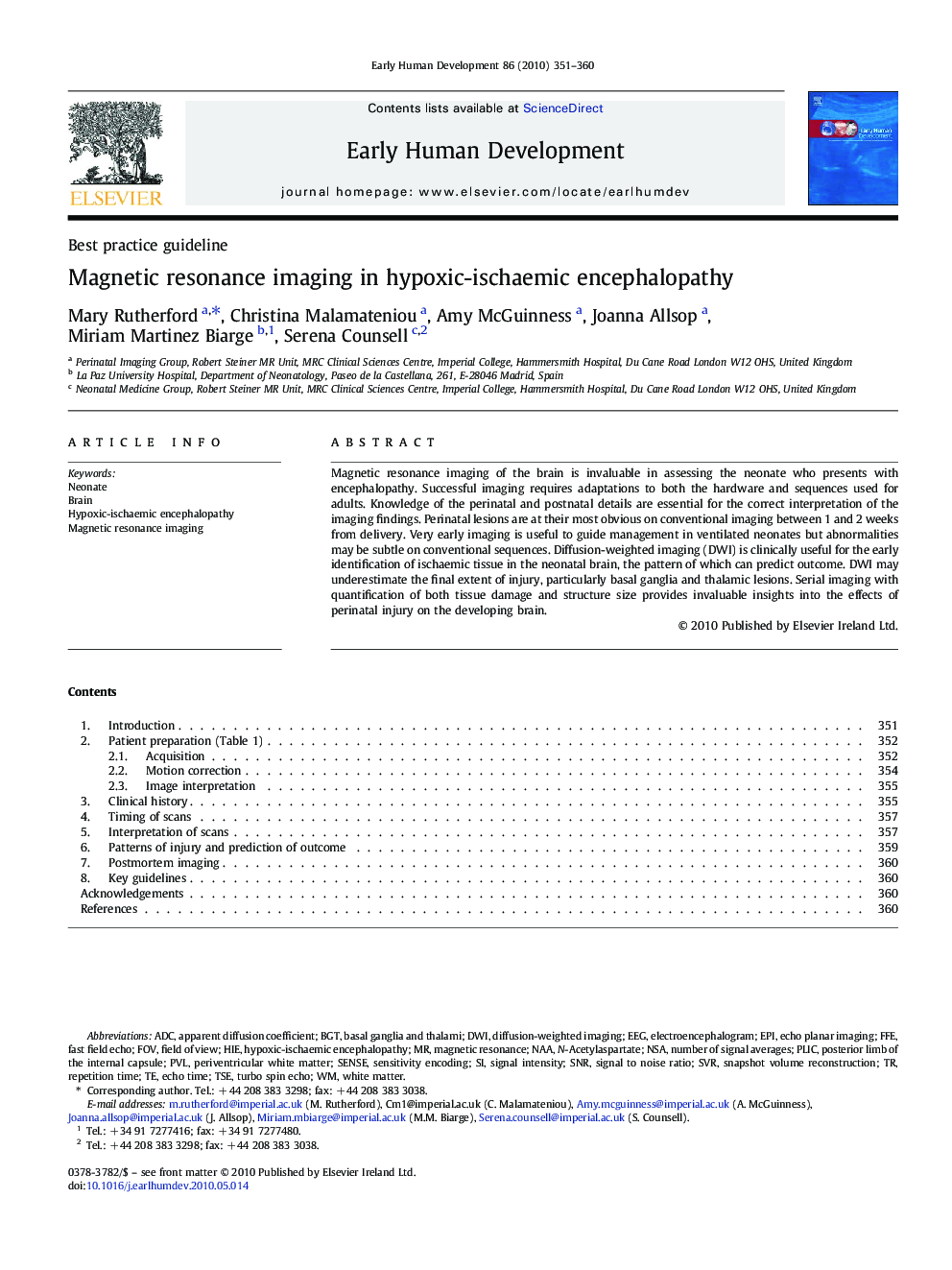| Article ID | Journal | Published Year | Pages | File Type |
|---|---|---|---|---|
| 3917630 | Early Human Development | 2010 | 10 Pages |
Magnetic resonance imaging of the brain is invaluable in assessing the neonate who presents with encephalopathy. Successful imaging requires adaptations to both the hardware and sequences used for adults. Knowledge of the perinatal and postnatal details are essential for the correct interpretation of the imaging findings. Perinatal lesions are at their most obvious on conventional imaging between 1 and 2 weeks from delivery. Very early imaging is useful to guide management in ventilated neonates but abnormalities may be subtle on conventional sequences. Diffusion-weighted imaging (DWI) is clinically useful for the early identification of ischaemic tissue in the neonatal brain, the pattern of which can predict outcome. DWI may underestimate the final extent of injury, particularly basal ganglia and thalamic lesions. Serial imaging with quantification of both tissue damage and structure size provides invaluable insights into the effects of perinatal injury on the developing brain.
